Background
B. Alan Wallace was born on April 17, 1950, in Pasadena, California, United States. He is a son of David H. Wallace, a theologian, and Barbara N. Wallace.

1978
Madison, Wisconsin, United States
Alan in Madison, Wisconsin, in 1978.
1984
Amherst, Massachusetts 01002, United States
Alan with His Holiness the Dalai Lama at Amherst College, Autumn 1984.
2004
Dharamsala, India
Alan with Jetsun Dampa Rinpoche in Dharamsala, 2004.
2005
Alan and his family with Yangthang Rinpoche, 2005.
2009
Av. Paulo Gama, 110 - Farroupilha, Porto Alegre - RS, 90040-060, Brazil
From left to right: B. Alan Wallace, Padma Samten, Marlene Rossi Severino Nobre and Roberto Lúcio Vieira de Souza at the Federal University of Rio Grande do Sul, 2009.
2009
14 Darling Dr, Sydney NSW 2000, Australia
B. Alan Wallace speaks on stage during a "The Mind & It's Potential" conference at the Sydney Convention & Exhibition Centre on December 3, 2009, in Sydney, Australia.
2009
14 Darling Dr, Sydney NSW 2000, Australia
His Holiness the Dalai Lama (left) and B. Alan Wallace (right) on stage during a "The Mind & It's Potential" conference at the Sydney Convention & Exhibition Centre on December 3, 2009, in Sydney, Australia.
University of California, San Diego, California, United States
During the period from 1968 till 1971, Wallace attended the University of California, San Diego.
University of Gottingen, Germany
Between 1970 and 1971, B. Alan participated in an overseas study program at the University of Gottingen, Germany.
220 South Pleasant Street, Amherst, MA 01002, United States
In 1987, Wallace graduated summa cum laude from Amherst College with a Bachelor of Arts degree in Physics, Philosophy of Science and Sanskrit.
450 Serra Mall, Stanford, CA 94305, United States
In 1992, B. Alan got a Master of Arts degree in Religious Studies from Stanford University. Three years later, in 1995, he received a Doctor of Philosophy degree in Religious Studies from the same university.
B. Alan Wallace talking to Dalai Lama.














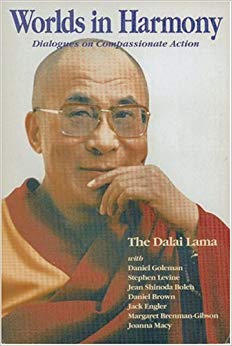
(This book offers offer wide-ranging, yet focused exchange...)
This book offers offer wide-ranging, yet focused exchanges among seven highly-accomplished panelists and H.H. the Dalai Lama, who address inner-city violence, environmental destruction, roles of women, war and its aftermath, and other crucial issues of our time. Translated by B. Alan Wallace and Geshe Thubten Jinpa.
https://www.amazon.com/Worlds-Harmony-Dialogues-Compassionate-Action/dp/0938077775/?tag=2022091-20
1992

(This work shows how Buddhist contemplative methods of inv...)
This work shows how Buddhist contemplative methods of investigating reality are relevant for modern physics and psychology.
https://www.amazon.com/Choosing-Reality-Buddhist-View-Physics/dp/1559391995/?tag=2022091-20
1996

(This book takes a bold new look at ways of exploring the ...)
This book takes a bold new look at ways of exploring the nature, origins and potentials of consciousness within the context of science and religion. Alan Wallace draws careful distinctions between four elements of the scientific tradition: science itself, scientific realism, scientific materialism and scientism.
https://www.amazon.com/Taboo-Subjectivity-Toward-Science-Consciousness/dp/0195132076/?tag=2022091-20
2000

(This work brings together distinguished philosophers, Bud...)
This work brings together distinguished philosophers, Buddhist scholars, physicists and cognitive scientists to examine the contrasts and connections between the worlds of Western science and Eastern spirituality. Second Edition.
https://www.amazon.com/Buddhism-Science-B-Alan-Wallace/dp/0231123353/?tag=2022091-20
2003
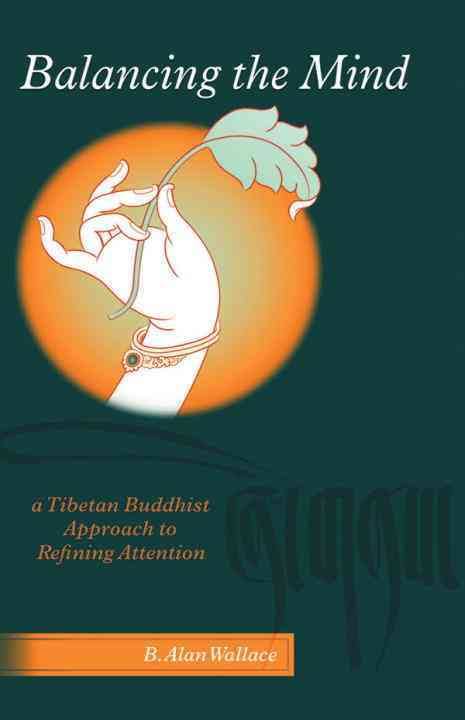
(B. Alan Wallace explains the methods and experiences of T...)
B. Alan Wallace explains the methods and experiences of Tibetan practitioners and compares these with investigations of consciousness by Western scientists and philosophers. This work includes a translation of the classic discussion of methods for developing exceptionally high degrees of attentional stability and clarity by fifteenth-century Tibetan contemplative Tsongkhapa.
https://www.amazon.com/Balancing-Mind-Buddhist-Approach-Attention/dp/1559392304/?tag=2022091-20
2005

(Bridging the gap between the world of science and the rea...)
Bridging the gap between the world of science and the realm of the spiritual, B. Alan Wallace introduces a natural theory of human consciousness, that has its roots in contemporary physics and Buddhism.
https://www.amazon.com/Hidden-Dimensions-Unification-Consciousness-Columbia/dp/0231141513/?tag=2022091-20
2007
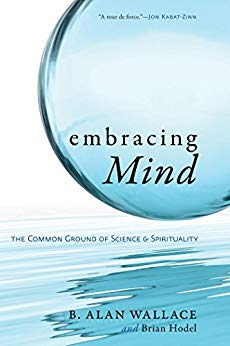
(In this work, B. Alan Wallace and Brian Hodel propose a s...)
In this work, B. Alan Wallace and Brian Hodel propose a science of the mind, based on the contemplative wisdom of Buddhism, Hinduism, Taoism, Christianity and Islam.
https://www.amazon.com/Embracing-Mind-Common-Science-Spirituality-ebook/dp/B01BMYXU4U/?tag=2022091-20
2008

(By establishing a dialogue, in which the meditative pract...)
By establishing a dialogue, in which the meditative practices of Buddhism and Christianity speak to the theories of modern philosophy and science, B. Alan Wallace reveals the theoretical similarities, underlying these disparate disciplines and their unified approach to making sense of the objective world.
https://www.amazon.com/Mind-Balance-Meditation-Buddhism-Christianity-ebook/dp/B0097D7GTO/?tag=2022091-20
2009

("The Four Immeasurables" — the cultivation of loving-kind...)
"The Four Immeasurables" — the cultivation of loving-kindness, compassion, empathetic joy and equanimity — is a rich suite of practices, that open the heart, counter the distortions in our relationships to ourselves and deepen our relationships to others. Alan Wallace presents a unique interweaving of teachings on the Four Immeasurables with instruction on meditative quiescence, or shamatha practice, to empower the mind.
https://www.amazon.com/Four-Immeasurables-Practices-Open-Heart/dp/155939353X/?tag=2022091-20
2010
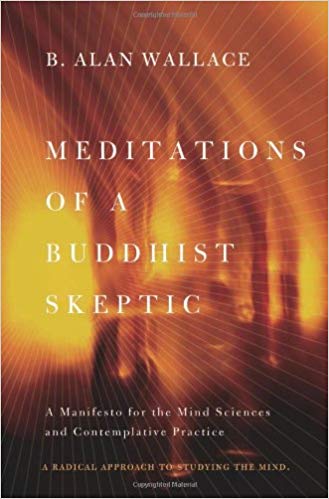
(This work represents a radical approach to studying the m...)
This work represents a radical approach to studying the mind.
https://www.amazon.com/Meditations-Buddhist-Skeptic-Manifesto-Contemplative/dp/0231158351/?tag=2022091-20
2011

(In "Stilling the Mind", the author uses the wisdom of Dzo...)
In "Stilling the Mind", the author uses the wisdom of Dzogchen — the highest of all the meditation traditions — to open up the shamatha practice into a space of vast freedom. Here, Wallace introduces his readers to Dudjom Lingpa's Vajra Essence, one of the most cherished works of the Nyingma school, from which Dzogchen stems. With his trademark enthusiasm and keen intelligence, Wallace makes obscure concepts intelligible to contemporary readers and allows them to glimpse the profound realizations of a great nineteenth-century spiritual adept.
https://www.amazon.com/Stilling-Mind-Shamatha-Teachings-Lingpas-ebook/dp/B005VSIZ8A/?tag=2022091-20
2011

(Bringing his experience as a monk, scientist and contempl...)
Bringing his experience as a monk, scientist and contemplative, Alan Wallace offers a rich synthesis of Eastern and Western traditions along with a comprehensive range of meditation practices interwoven throughout the text. The guided meditations are systematically presented, beginning with very basic instructions, which are then gradually built upon as one gains increasing familiarity with the practice.
https://www.amazon.com/Minding-Closely-Four-Applications-Mindfulness/dp/1559393696/?tag=2022091-20
2011
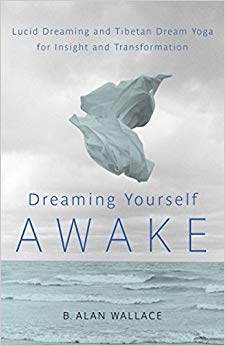
(Some of the greatest of life’s adventures can happen whil...)
Some of the greatest of life’s adventures can happen while you’re sound asleep. That’s the promise of lucid dreaming, which is the ability to alter your own dream reality any way you like simply by being aware of the fact, that you’re dreaming while you’re in the midst of a dream. There is a range of techniques anyone can learn to become a lucid dreamer — and this book provides all the instruction one needs to get started.
https://www.amazon.com/Dreaming-Yourself-Awake-Tibetan-Transformation/dp/159030957X/?tag=2022091-20
2012
educator interpreter monk translator author scholars
B. Alan Wallace was born on April 17, 1950, in Pasadena, California, United States. He is a son of David H. Wallace, a theologian, and Barbara N. Wallace.
During the period from 1968 till 1971, Wallace attended the University of California, San Diego. Between 1970 and 1971, he participated in an overseas study program at the University of Gottingen, Germany. In 1971, Wallace left his university studies and moved to Dharamsala, India, to study Tibetan Buddhism, medicine and language. He was ordained by His Holiness the Dalai Lama, and over fourteen years as a monk he studied with and translated for several of the generation’s greatest lamas.
To be more precise, from 1971 till 1973, Bruce studied Buddhism and Tibetan language at the Library of Tibetan Works and Archives in Dharamsala, India. Between 1973 and 1974, he studied Buddhism in other locations, including the present-day Institute of Buddhist Dialectics in Dharamsala, India. In 1977, he continued his studies at the Center for Higher Tibetan Studies in Switzerland, where he also read lectures. Bruce remained at the Сenter until 1979.
Later, Wallace resumed his studies, and in 1987, he graduated summa cum laude from Amherst College with a Bachelor of Arts degree in Physics, Philosophy of Science and Sanskrit. Then, he continued his education at Stanford University, graduating with a Master of Arts degree in Religious Studies in 1992. Three years later, in 1995, Wallace got a Doctor of Philosophy degree in Religious Studies from the same university.
In 1975, Wallace began his career as a lecturer at the Tibet Institute Rikon in Switzerland, a post he held till 1977, when he began lecturing at the Center for Higher Tibetan Studies in Switzerland. Bruce held this position until 1979. The same year, in 1979, he served as an interpreter for His Holiness the Dalai Lama. In 1982, Wallace worked as an interpreter at the University of Washington in Seattle.
During the period from 1984 till 1986, Bruce read lectures at the American Institute of Buddhist Studies in Amherst. In 1987, he also lectured at Amherst College.
In 1990, Bruce was appointed a teaching assistant at Stanford University, a position he held till 1991, when he became a teaching intern. In 1992, Wallace was offered a post of a lecturer in Innovative Academic Courses Program at the same university. Later, in 1994, Bruce was promoted to the position of chief teaching assistant. Between 1995 and 1996, he acted as a visiting scholar in religious studies, still at Stanford University. In 1997, Wallace was made an instructor at the same educational establishment.
Also, in 1990, Wallace served as an organizer and interpreter at Mind and Life III, a meeting between His Holiness the Dalai Lama and western scientists and scholars in Dharamsala, India. In 1991, Bruce became a member of board of directors of Mind and Life Institute. The following year, in 1992, he acted as an interpreter and consultant at Mind and Life IV, also in Dharamsala, India. In 1994, Bruce co-organized and co-interpreted for a symposium with His Holiness the Dalai Lama and Stanford Faculty at Stanford Memorial Church.
In 1997, Wallace worked as an instructor at the UCLA Extension in Los Angeles, California. The same year, in 1997, he was appointed a lecturer at the Department of Religious Studies of the University of California, Santa Barbara, where he remained until 2001.
In 2003, Wallace founded the Santa Barbara Institute for Consciousness Studies. The same year, he was made a president of the institute, a post he still continues to hold.
Later, together with Clifford Saron, Bruce ran the Shamatha project, which tested the effects of Buddhist meditation on 60 people they selected over 3 months. In 2016, he held a post of a visiting professor at Center of Buddhist Studies, University of Hong Kong. In November 2018, Wallace held a seminar, entitled "A Fourfold Framework for Optimal Mental Health and Balance" in collaboration with United World College Thailand.
During his career, Wallace also worked as an interpreter at various symposiums, lectures, conferences and dialogues. Moreover, he delivered academic presentations on Tibetan studies, Buddhism, religion and spirituality, and did research on Tibetan studies and Buddhism.
In addition, Bruce leads workshops on dream yoga. He is also a chairman of the Thanypura Mind Centre in Thailand, where he leads meditation retreats. Wallace has been holding the post of a chairman since 2010.
B. Alan Wallace is a prominent voice in the emerging discussion between contemporary Buddhist thinkers and scientists, who question the materialist presumptions of their 20th-century paradigms. Along with his scholarly work, Alan is regarded as one of the West’s preeminent meditation teachers and retreat guides. He has edited, translated, authored and contributed to more than forty books on Tibetan Buddhism, medicine, language and culture, and the interface between science and Buddhism. Moreover, since the late-1970's, Wallace has been a frequent interpreter and contributor to meetings between the Dalai Lama and prominent scientists.
He received many awards, including Basset Prize in Physics in 1984-1985, Moseley Prize in Religion in 1986-1987, George Stebbins Moses Memorial Fellowship in 1989-1990 and others.
("The Four Immeasurables" — the cultivation of loving-kind...)
2010(Bringing his experience as a monk, scientist and contempl...)
2011(This work brings together distinguished philosophers, Bud...)
2003(In "Stilling the Mind", the author uses the wisdom of Dzo...)
2011(By establishing a dialogue, in which the meditative pract...)
2009(This book takes a bold new look at ways of exploring the ...)
2000(This work shows how Buddhist contemplative methods of inv...)
1996(This book offers offer wide-ranging, yet focused exchange...)
1992(Bridging the gap between the world of science and the rea...)
2007(Some of the greatest of life’s adventures can happen whil...)
2012(This work represents a radical approach to studying the m...)
2011(In this work, B. Alan Wallace and Brian Hodel propose a s...)
2008(Translated by B. Alan Wallace.)
1992(B. Alan Wallace explains the methods and experiences of T...)
2005
Quotations:
"We are persons, whose bodies can be objectively studied according to the impersonal laws of physics, but whose minds are subjectively experienced in ways science has not yet been able to fathom. In short, by radically separating science from religion, we are not merely segregating two human institutions; we are fragmenting ourselves as individuals and as a society in ways, that lead to deep, unresolved conflicts in terms of our view of the world, our values and our way of life."
"Life is a flash of lightning in the dark of night. It is a brief time of tremendous potential."
"One of the most persistent of all delusions is the conviction, that the source of our dissatisfaction lies outside ourselves."
"The point of Buddhist meditation is not to stop thinking, for cultivation of insight clearly requires intelligent use of thought and discrimination. What needs to be stopped is conceptualisation, that is compulsive, mechanical and unintelligent, that is, activity, that is always fatiguing, usually pointless and at times seriously harmful."
"Mindfulness was experienced as not holding onto the past, the future, or "nowness", but relaxing into the immediacy of whatever was happening."
"Tibetans look at a person, who holds himself above others, believing he is better than others and knows more, and they say that person is like someone sitting on a mountain top: it is cold there, it is hard and nothing will grow. But if the person puts himself in a lower position, then that person is like a fertile field."
B. Alan is a member of Phi Beta Kappa.
B. Allan Wallace married Vesna (Acimovic) Wallace, a scholar, educator and translator, in 1989. He has a stepchild, whose name is Sarah Orbanic.

